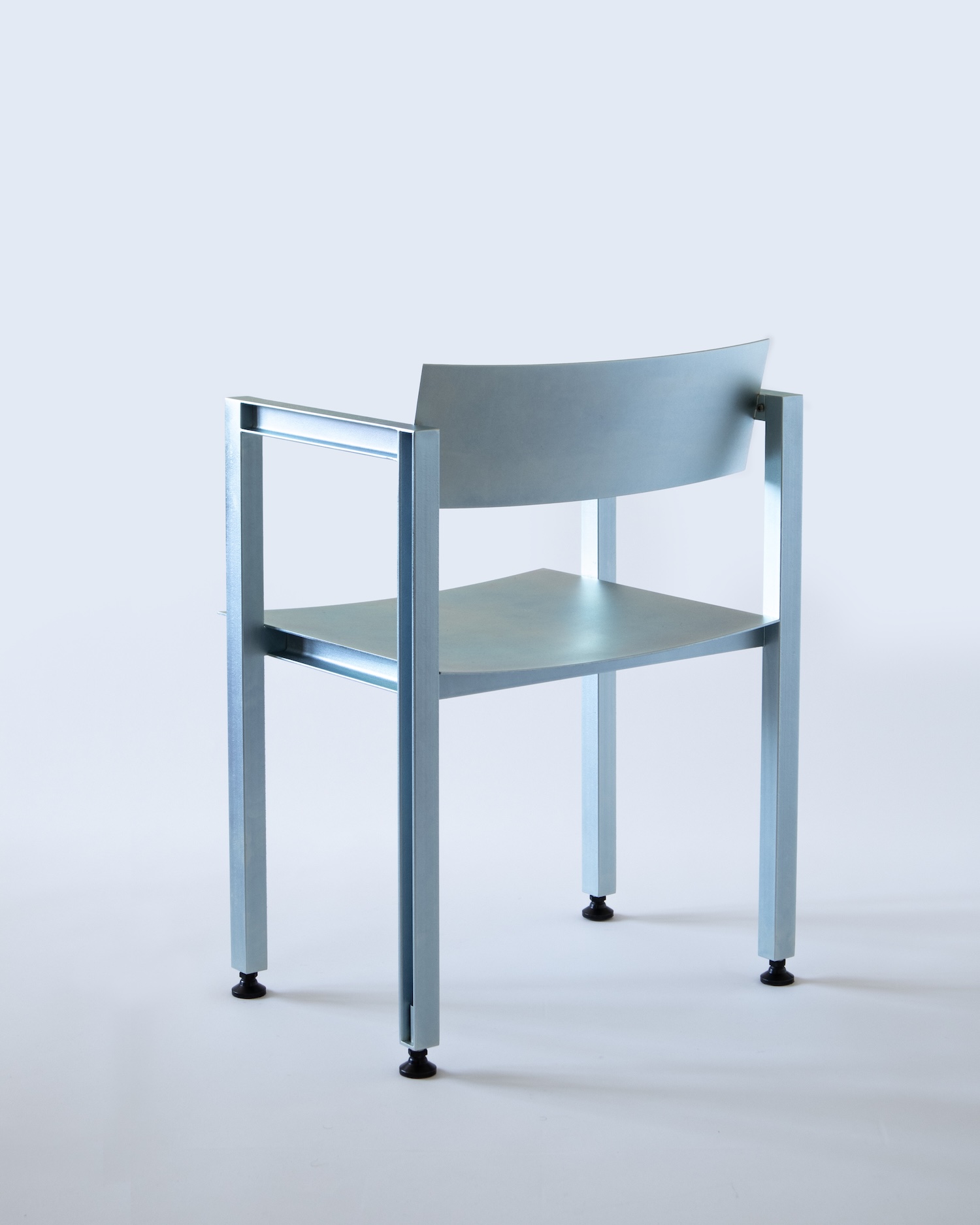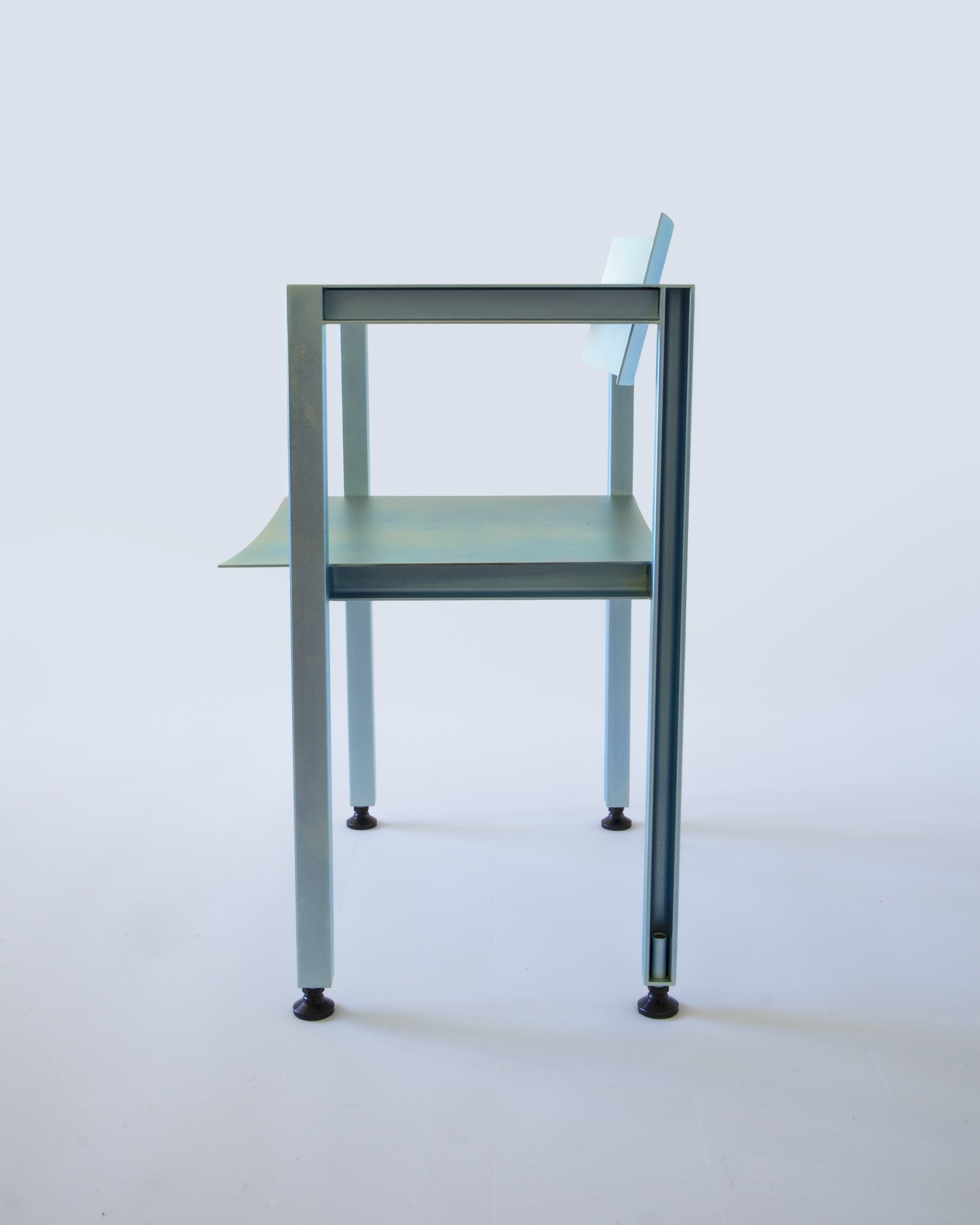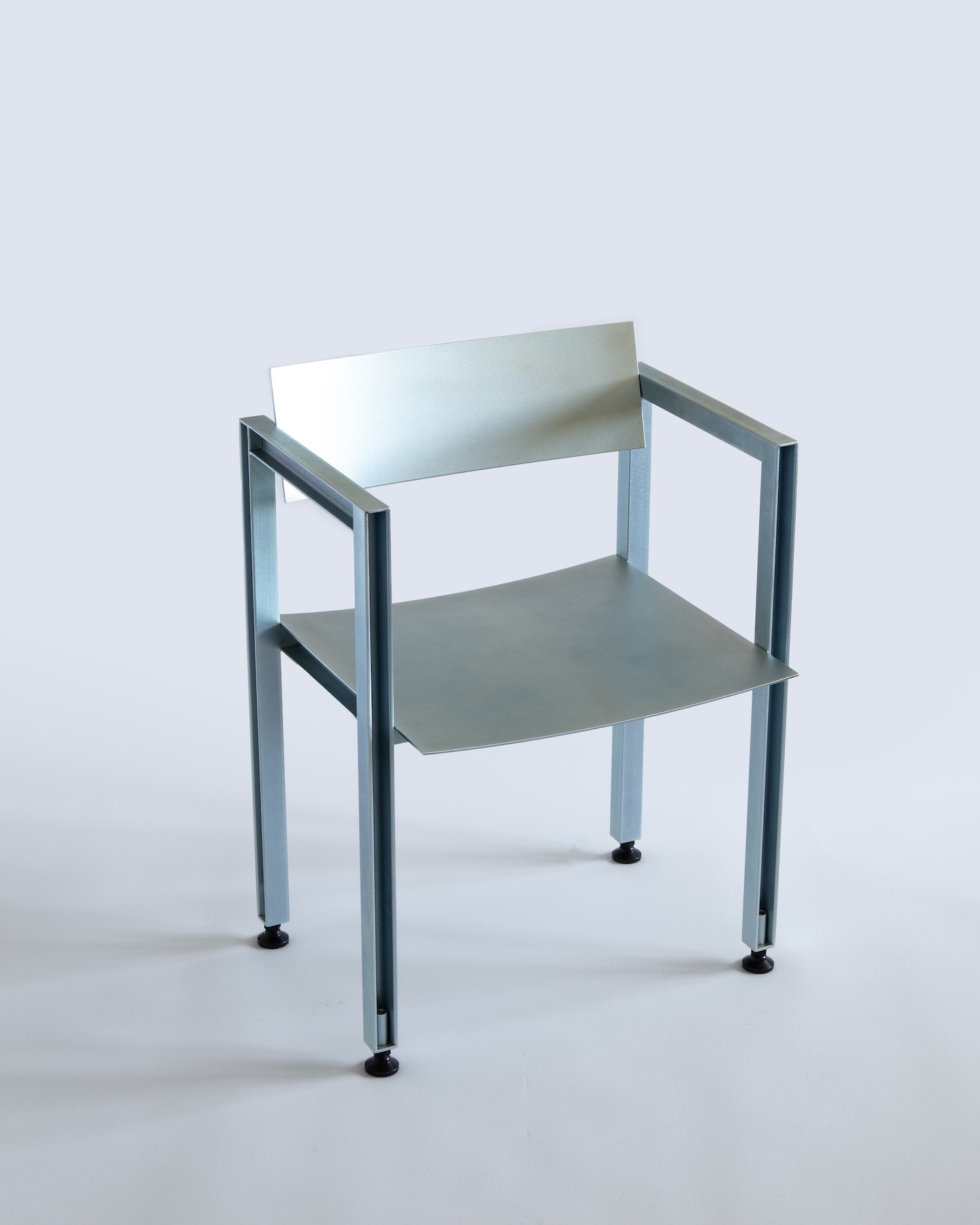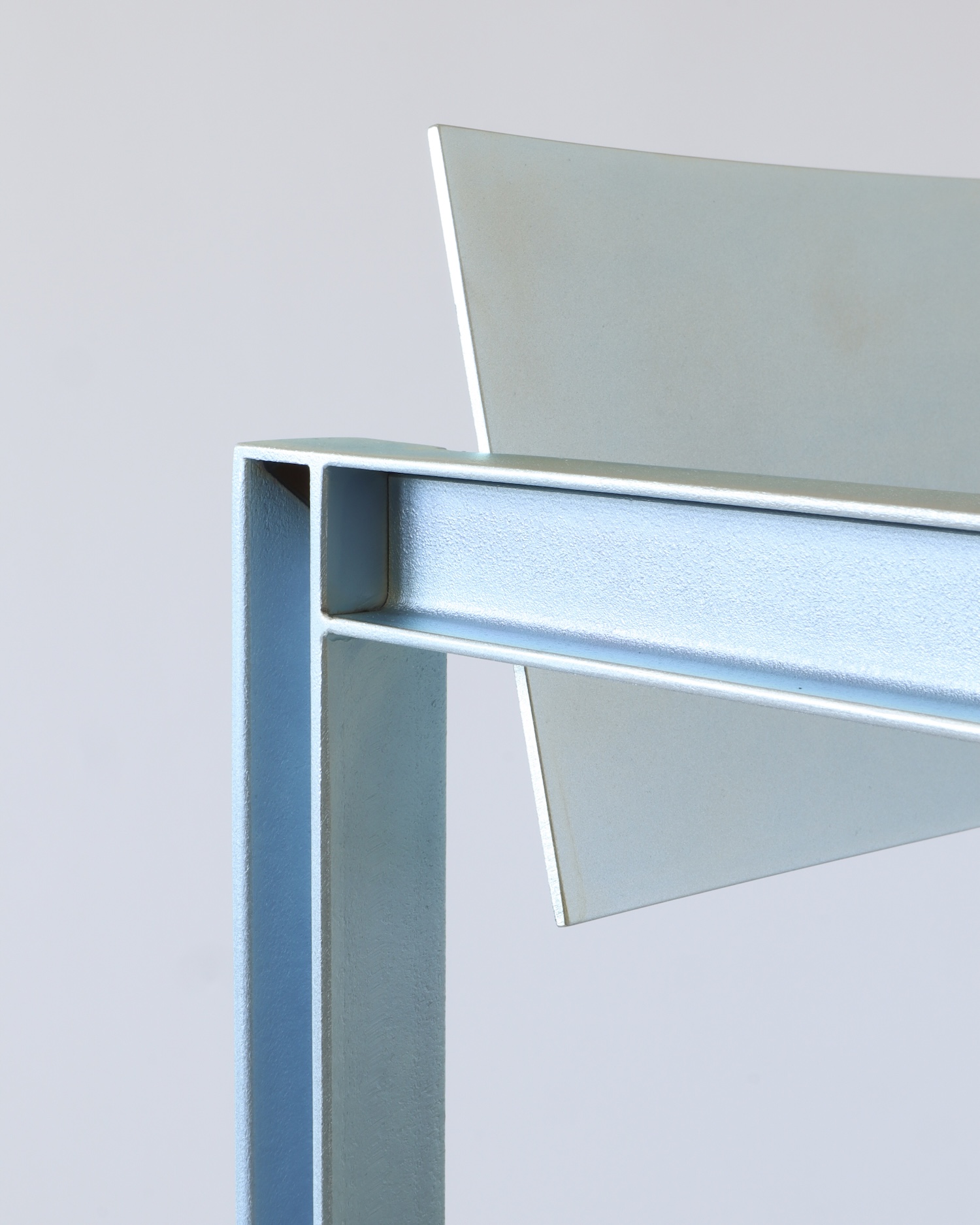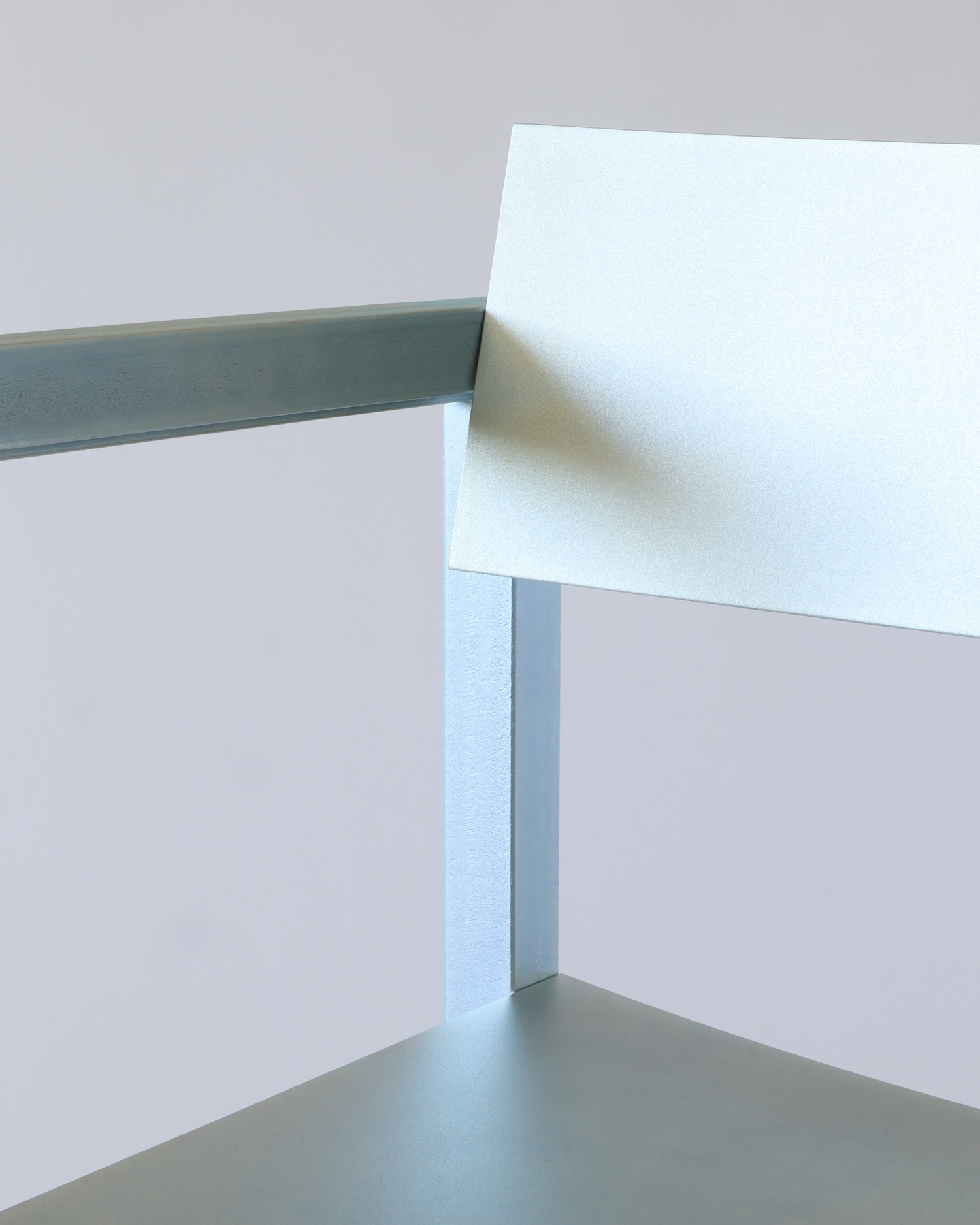Full Metal Chair is a minimalist chair created by Switzerland-based designer Matteo Bauer-Bornemann. In a world where furniture often conceals its construction beneath upholstery and decorative finishes, this chair stands as a declaration of structural honesty. The electro-galvanized steel piece speaks the language of bridges and industrial frameworks, its grid of vertical and horizontal elements creating a dialogue between utility and form that feels both timeless and distinctly contemporary.
The chair’s dimensions create a harmonious proportion that references classic seating archetypes while establishing its own clear identity. What strikes one immediately is how the designer has embraced visibility rather than concealment. Each joint, each connection point becomes part of the visual narrative rather than something to be hidden away.
This approach recalls the early Modernist fascination with truth to materials that emerged in the 1920s Bauhaus workshops, where Marcel Breuer’s tubular steel furniture revolutionized domestic interiors. Yet where Breuer’s pieces often retained curves that referenced the human body, this design embraces a more rigorous geometric vocabulary – its linear grid suggesting architectural blueprints translated into three dimensions.
The zinc galvanization process is particularly noteworthy, providing not just corrosion resistance but also a distinctive matte silver patina that will subtly evolve over time. This technical choice transforms what could be merely functional into something more nuanced, where protection becomes aesthetic expression.
“The structure remains legible – nothing is concealed, nothing disguised,” states the designer, articulating what might be considered the philosophical heart of the piece. This ethos connects to broader contemporary conversations about transparency in design – a reaction perhaps to decades of objects whose inner workings remain mysterious to their users.
The repetitions and symmetries within the chair’s framework create a visual rhythm that feels both ordered and somehow musical, like a physical manifestation of a minimalist composition. Yet despite its technical precision, the piece avoids the coldness that sometimes accompanies industrial aesthetics.
